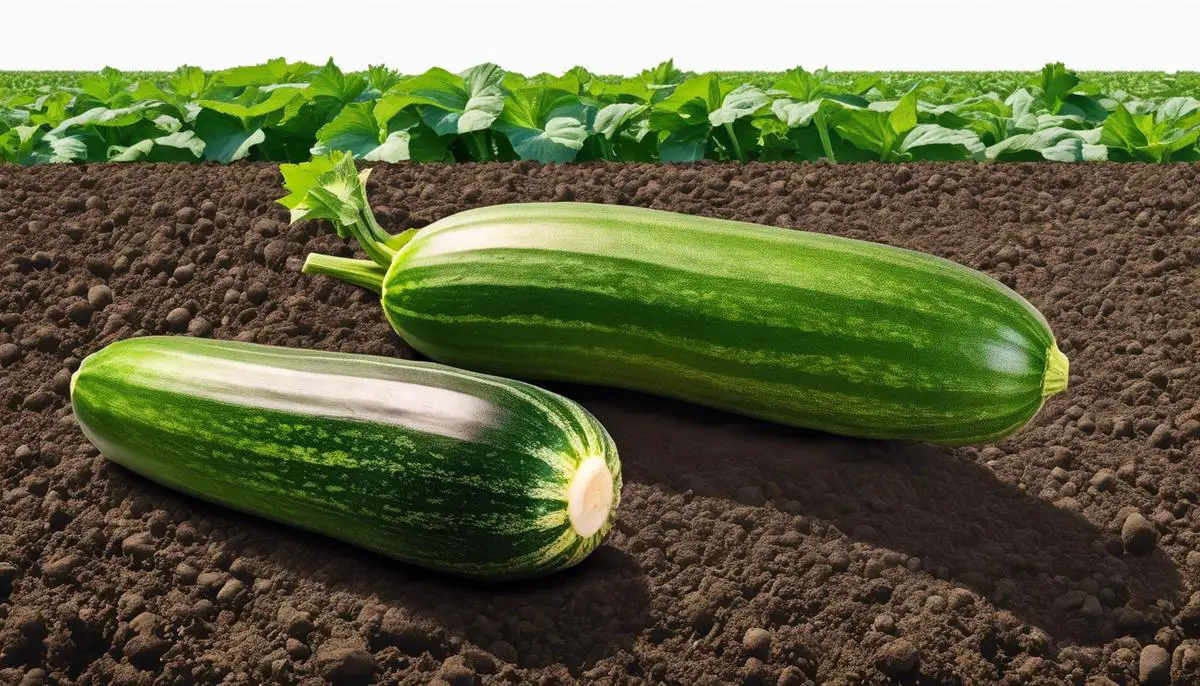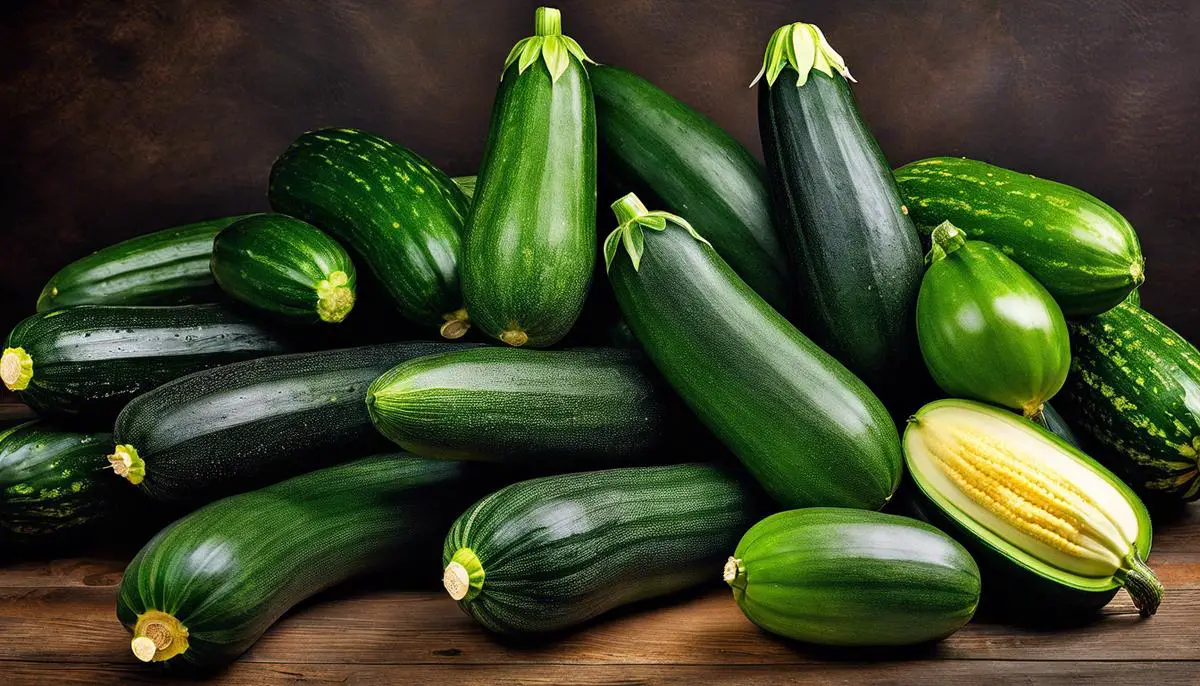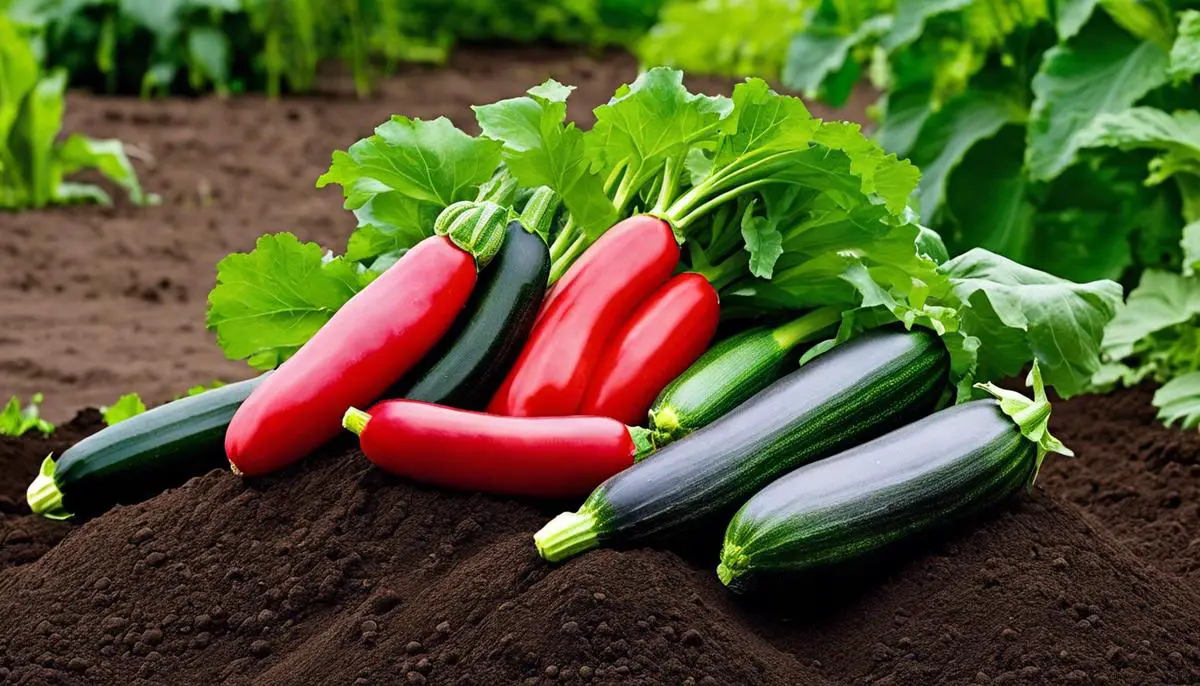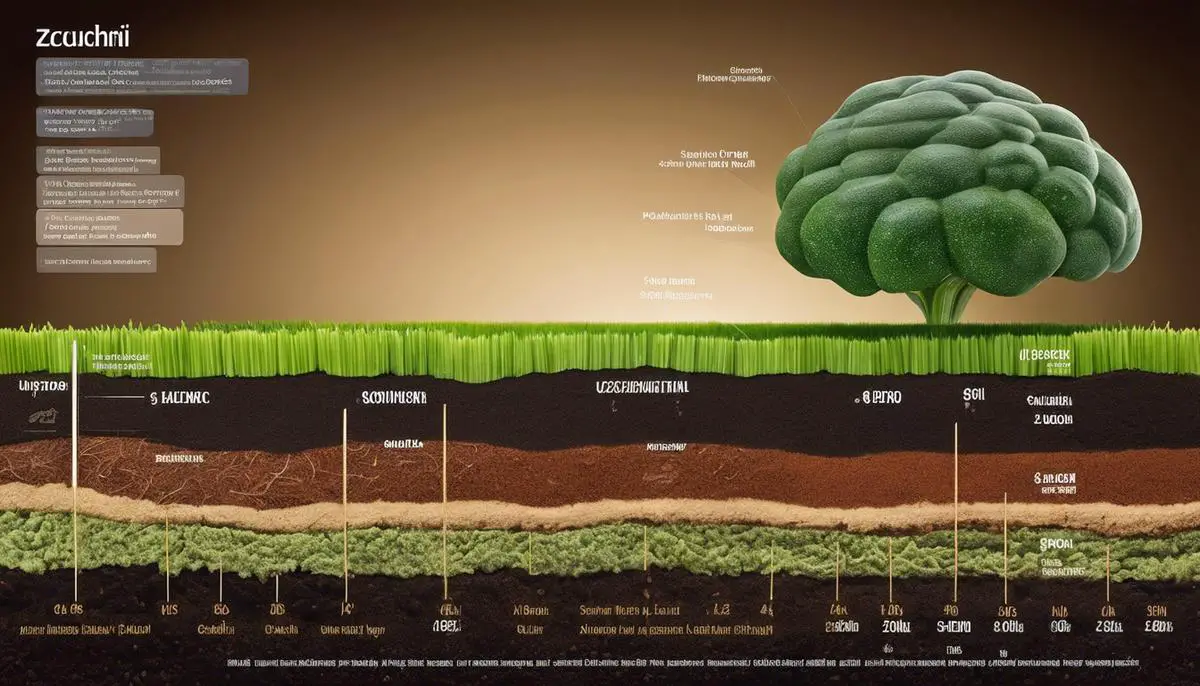Gardening enthusiasts know that the secret to lush, bountiful zucchini plants lies beneath the surface in the soil in which they are planted. The art of cultivating the perfect environment for these squash plants starts with understanding the delicate balance of soil composition. By delving into the best soil mix for zucchini, one has to consider the crucial elements such as a rich array of nutrients, ample amounts of organic matter, and the pH levels that range from slightly acidic to neutral. This is where zucchini plants can truly flourish. Beyond composition, the physical properties of soil also play a pivotal role. Soil drainage and aeration are not merely niceties but necessities that ensure our zucchini doesn’t fall prey to waterlogging or suffocating roots. Embarking on this gardening journey invites you to explore the world beneath your plants’ roots and master the foundation of zucchini success.
Soil Composition
The Secret to Supreme Zucchini Soil: Composition Counts!
Zucchini aficionados, gather round! We’re diving into the dirt – quite literally – to ensure your zucchini plants flourish with vigor and productivity. The secret to sizable, scrumptious squash rests in the careful crafting of the ideal soil composition. Let’s get down to the nub and granules of what makes for the perfect zucchini-growing medium.
Reader Poll: What online courses would interest you?
First up: Texture. Zucchini plants are partial to well-draining soils, as waterlogged roots are a no-go for healthy growth. Loamy soil, that goldilocks blend of sand, silt, and clay, delivers this drainage while retaining enough moisture to keep the plant hydrated.
Next in line: Nutrients. Zucchini are hungry plants and crave nutrient-rich soil. A bountiful mix should include a healthy dose of organic matter – think compost or well-rotted manure. This not only provides the essential nutrients but also improves soil structure and encourages beneficial microbial activity.
pH Levels? Absolutely pivotal. Zucchini prefer slightly acidic to neutral soil, with pH values ranging from 6.0 to 7.5. If your soil is too acidic or too alkaline, fret not – amendments like lime (to increase pH) or sulfur (to decrease pH) can help correct this.
Subscribe to our newsletter!
Fertilization is the ace up the sleeve. A balanced 10-10-10 (NPK) fertilizer will go a long way in ensuring your plants have all they require. A gentle reminder, though: too much fertilizer can lead to lush foliage at the expense of fruit. Moderation is key.
Finally, a word on mulch. A layer of organic mulch, like straw or wood chips, will help to retain soil moisture, suppress weeds, and keep the fruit clean.
In sum, the ideal soil composition for zucchini plants is loamy, rich in organic matter, well-fertilized, with a fair pH, and all tucked in with a cozy layer of mulch. Here’s to the imminent arrival of a bountiful zucchini harvest! Happy gardening!

Soil Drainage and Aeration
Unlocking the Secrets to Lush Zucchini Harvests: Soil Drainage and Aeration
Zucchini, those versatile garden performers, thrive under the right subterranean conditions. While discussions often linger around sunlight and water, let’s dig into the lesser-sung heroes of the underground: soil drainage and aeration. These two soil attributes can make or break zucchini growth, giving zealous cultivators the edge for harvesting success.
Soil Drainage: The Security Against Soggy Situations
Soil that drains well is like a good insurance policy for zucchini plants. Excess moisture, although initially seeming benign, is the equivalent of standing with feet in water for too long – unpleasant and fraught with potential issues. Overly wet soil leads to root rot and fungal diseases, which are the arch-nemeses of healthy zucchini roots.
Guiding Water Away: The How-To
To test soil drainage, conduct a simple percolation test. Dig a hole about a foot deep and fill it with water. The goal is for the water to drain within an hour. If it takes longer, the soil is too dense. Amending with coarse sand or fine gravel improves the drainage pathways, allowing the zucchini to form robust root structures while avoiding waterlogged conditions.
Aeration: Letting Roots Breathe
Imagine wearing a mask that’s too tight – that’s what poor aeration feels like for roots. Aeration is all about pore space in the soil for air to circulate. Compacted soil chokes out life by preventing roots from accessing the oxygen needed for nutrient absorption and growth.
The Fix for Compaction
The fix is simple: regular loosening. Tools like a garden fork or an aerator create gaps for air and even improve water distribution, which is a double win for zucchini. Adding organic matter not only boosts nutrient levels but also improves soil structure and fosters an environment conducive to beneficial microorganisms that support plant health.
Consistent Attention, Consistent Harvests
Adjusting drainage and aeration isn’t a one-time job. Gardeners must be vigilant, ensuring ongoing ideal conditions. Regularly check for pooling water, especially after heavy rainfall, and fluff up the topsoil to combat surface crusts that can impede air flow.
These underground essentials of drainage and aeration can elevate zucchini growing from a hopeful gamble to a predictable pastime. With these tips, gardens are on their way to yielding those coveted, plentiful zucchini harvests that are the pride of homegrown vegetables.

Soil Fertility and Amendments
Ready to give your zucchini plants a feast fit for a king? Let’s dig into some soil amendments that can transform your garden patch into a zucchini paradise!
Compost: The All-Rounder
Composting isn’t just environmentally savvy; it’s a plant’s best friend, zucchinis included. Rich in nutrients, compost promotes vigorous growth by releasing nitrogen, phosphorus, and potassium into the soil at a steady pace. You can’t go wrong with a generous addition of well-rotted compost mingled into the planting site.
Worm Castings: The Plant Superfood
Those wriggly earth-dwellers aren’t just good for fishing bait. Worm castings, their nutrient-rich waste, are gold for soil fertility. They not only provide essential nutrients but also introduce beneficial microbes, improving soil structure and promoting healthy plant growth. A sprinkle of worm castings around your zucchini plants is like giving them a health-boosting treat.
Blood Meal: The Nitrogen Powerhouse
Zucchini plants, being heavy feeders, love their nitrogen, and blood meal is a stellar organic choice. It’s high in this essential nutrient, prompting lush, green growth. Apply a light scattering around the base of the plants and water it in; just remember, a little goes a long way.
Bone Meal: For Sturdy Structures
Bone meal is a fantastic source of phosphorus, necessary for strong root development and flower production. Mixing some into the soil can provide the added bonus of calcium, a crucial element for preventing blossom-end rot, a common issue for zucchini growers.
Fish Emulsion: The Liquid Booster
This fast-acting, nutrient-dense amendment is derived from fish processing. Fish emulsion is particularly rich in nitrogen, but it also contains trace elements that are beneficial for plant health. Dilute it as directed and use it as a liquid feed during the growing season to keep those zucchinis pumped.
Green Sand: The Trace Element Treasure Trove
Now, if you’re looking to correct mineral deficiencies, green sand is a must-have. Containing a smorgasbord of trace elements and potassium, it releases nutrients slowly, helping plants over a long period. It also improves soil texture, promoting better drainage and root proliferation which is crucial for thriving zucchinis.
Dolomitic Lime: pH Balancer and Calcium Provider
If your soil test reveals an acidic environment, dolomitic lime will raise the pH and supply a good dose of magnesium and calcium in the process. Keep those zucchinis happy with a balanced pH, and you can expect robust growth, improved nutrient uptake, and delicious bounties.
Remember, moderation is key. Over-amendment can be just as bad as neglect. Keep track of the additions, so the soil isn’t overwhelmed. A balanced diet leads to the healthiest zucchinis around, so amend mindfully and watch your garden flourish!

Embarking on the rewarding path of zucchini cultivation illuminates the depth of connection between soil and plant health. As we incorporate the right amendments and meticulously care for the soil, we do more than grow vegetables; we nurture an ecosystem that sustains life. Whether you whisper to the seeds, encourage the shoots, or celebrate the harvest, remember that the health of the soil is the health of your garden. So, let’s roll up our sleeves, tend to the ground that feeds us and watch as our zucchini reach for the sun, anchored in the richness of the earth that is now well-understood, thoroughly enriched, and beautifully balanced to support their growth.

